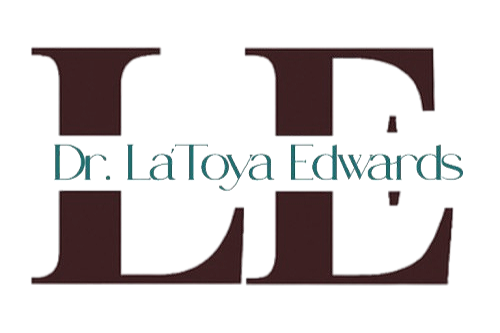When the Body Speaks: Bell’s Palsy, Stress, and the Cost of “Being Strong”
Why I’m Writing This
Recently, I learned about a man who developed Bell’s palsy—sudden facial paralysis that can follow illness or periods of intense stress. As a somatic psychotherapist, I see this less as the body “failing,” and more as the body sounding an alarm. Our nervous systems keep the score of what we push through, postpone, or swallow. For many African and African American men and women, that alarm is shaped by generations of survival, silence, and a cultural mandate to be unbreakable.
This article offers a body-centered lens on stress and Bell’s palsy, honors our historical context, and shares practical steps for restoring regulation—individually and organizationally.
The Weight We Carry: A Brief Cultural Context
Across African and African American communities, we often inherit a code: be strong, keep moving, don’t let them see you sweat. That code was adaptive—it helped our ancestors survive enslavement, colonial occupation, state violence, and economic exclusion. But the same survival code can become a cage when it teaches us to override the body’s needs.
For many men, strength becomes armor; tenderness disappears behind stoicism.
For many women, caretaking becomes a second shift in the nervous system—chronic tension and emotional labor disguised as “normal.”
For all of us, the reflex to suppress can convert psychological stress into physiological strain.
When the nervous system is locked in protection—fight, flight, freeze, or fawn—the body finds a way to speak. Sometimes that “speech” is muscle tightness, headaches, GI shifts, sleep disruption. Sometimes, following illness or high stress, the face itself goes quiet.
This is not weakness. It is a message.
A Somatic Primer: What Stress Looks Like in the Body
Fight/Flight: racing thoughts, jaw clenching, shallow breath, urgency, irritability.
Freeze/Shutdown: numbness, exhaustion, “fog,” withdrawal, reduced facial expression.
Fawn/Appease: over-functioning, people-pleasing, losing self-reference to stay safe.
Bell’s palsy is complex and medical; stress alone doesn’t “cause” it. But stress can tax immunity and recovery. Either way, your body benefits from regulation.
Important: Always consult your medical provider for new or sudden neurological symptoms.
Micro-Practices: Gentle Regulation You Can Use Today
These are low-intensity practices I teach leaders, clinicians, and teams. They’re not a replacement for care; they’re maintenance for your nervous system.
Exhale-Weighted Breath (2 minutes)
Inhale quietly through the nose. Exhale a beat longer than you inhale. Think in 4, out 6. Longer exhales cue the parasympathetic (rest-digest) system.
Jaw & Tongue Unclench (60 seconds)
Place the tip of your tongue behind your top front teeth; let your jaw hang heavy for a few breaths. This down-shifts facial tension that often rides with stress.
Orienting with the Eyes (90 seconds)
Slowly look around the room, naming 5 shapes or colors you see. Let your neck follow your gaze. This tells the midbrain, “We’re safe enough right now.”
Shoulder Sweep + Face Soften (90 seconds)
Roll shoulders back twice, down once. On the exhale, imagine the muscles around your eyes and cheeks softening. (If facial movement is limited, imagine the softening—motor imagery still helps.)
Boundary Check-In (1 minute)
Ask: What is one small “no” I can say today that would give my body a “yes”? Then do it.
Afrocentric Healing Lens: Strength with Belonging
My practice integrates Somatic Experiencing, IFS, Brainspotting, and Afrocentric spiritual-cultural wisdom—rituals that honor lineage, land, and community as sources of regulation.
Remembered Strength: Strength is not numbness; it is capacity plus connection.
Rituals that Regulate: breath as prayer, soil or plant altars, libation for the ancestors, drumming/voice for rhythm and vagal tone.
Communal Repair: Healing is faster and more sustainable when witnessed by others.
For Leaders & High Achievers: Why This Matters at Work
Unregulated stress quietly taxes decision-making, creativity, and relational leadership. In organizations, it looks like reactionary communication, brittle culture, and burnout masked as “high performance.”
What I teach teams:
Body-based stress literacy (so people notice early, act early).
Micro-dosing regulation into meetings (2–3 minute resets that compound).
Boundaries as operational design (policies that protect focus, dignity, and rest).
When people feel safe in their bodies, they collaborate with more clarity and less reactivity.
A Compassionate Note on Bell’s Palsy
Bell’s palsy is typically temporary; many recover fully. It deserves medical assessment and rest. Somatic practices can support the nervous system through the uncertainty. If you or someone you love is experiencing facial paralysis or any sudden neurological symptoms, seek medical care immediately.
How I Can Help
I support individuals, teams, and institutions with body-centered approaches to stress, trauma, and performance:
Keynotes & Trainings: Somatic leadership, culturally responsive wellness, trauma-informed communication.
Sankofa Intensives (1–2 days): Deep, focused healing using somatic and Afrocentric methods.
Consulting for Organizations: Designing rituals and policies that regulate culture, not just people.
Ready to bring this work to your team or event?
👉 Book Dr. La’Toya to speak or train
👉 Explore Sankofa Intensives
FAQs (for readers who will email anyway 😉)
Is stress the cause of Bell’s palsy?
It’s multifactorial. Stress can strain the system and complicate recovery, but medical evaluation is essential.
Can somatic therapy move the needle?
Yes—by improving regulation, sleep, pain perception, and coping. It complements (not replaces) medical care.
Will this make me “less strong”?
No. It makes you more resourced. You keep your edge—without the cost.
